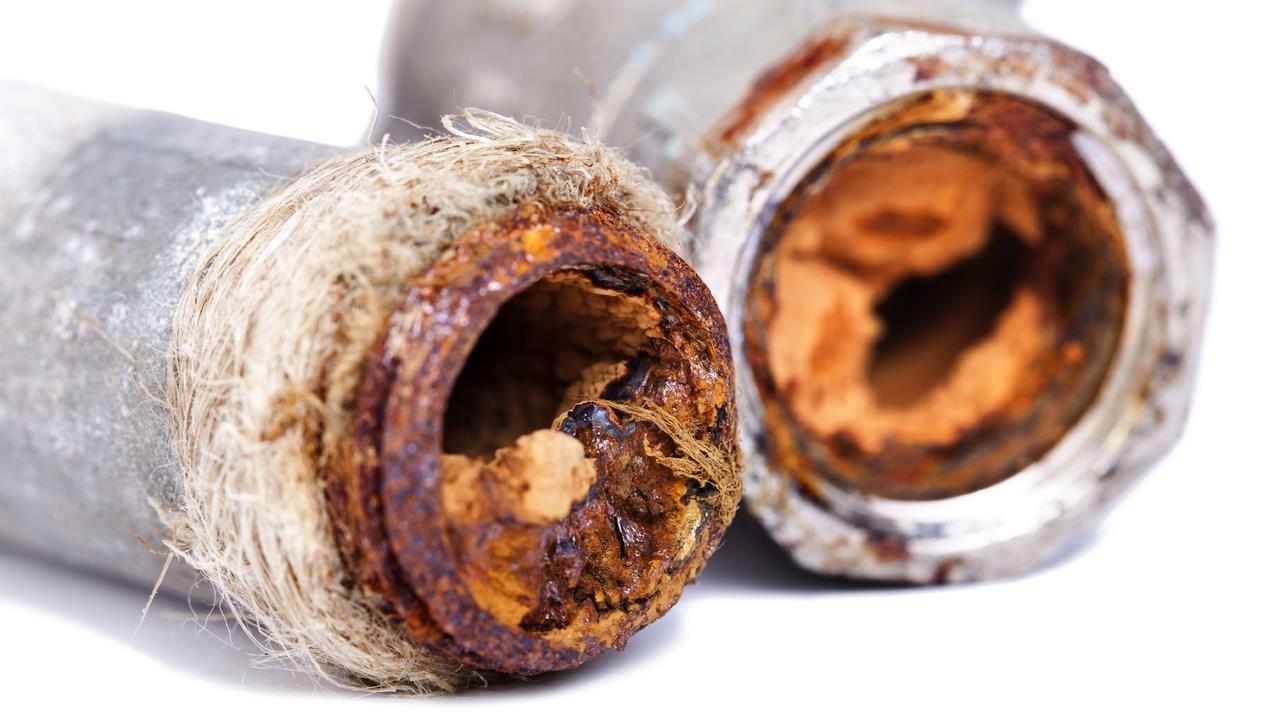


Detecting sludge, also known as magnetite, build-up in a heating system is key to long term boiler efficiency, but what are the tell-tale signs and the best forms of treatment? Graham Collins at Baxi provides a quick guide.
Corrosion within a central heating system is actually fairly common. When you consider the range of metals used from copper pipes to aluminium or stainless-steel heat exchangers and on to brass, cast iron and mild-steel radiators, it is no surprise that the presence of water can lead to some rusting.
In fact, it is not actually the presence of water that causes the rusting process, it is the introduction of oxygen – through a process called oxidation. When a system is topped up, or when a system is emptied and refilled, oxygen enters the system and iron oxide and aluminium hydroxide begin to form into small crystals. Due to their weight, the crystals settle throughout the system – in radiators, pipework, and even the boiler components.
As the sludge begins to build up in the heating system, it brings a number of potential problems, including blockages. These obstructions not only limit the flow of water throughout the heating system, therefore decreasing its efficiency, but metal deposits also become thermal conductors, reducing the effectiveness of radiators and the level of heat that they are able to produce.
How to spot sludge build-up
For heating engineers visiting someone’s home, there are a number of tell-tale signs of the build-up of sludge and magnetite in the system. Patchy areas of warmth on the radiator or even a cold band at the bottom, are common indicators, just as a radiator that is cold to touch but with connecting pipework that is hot, can also be a sign of sludge build-up.
On occasion, homeowners may also comment on the system being noisy, describing the sound as popping, clunking, and banging, commonly referred to in the heating industry as kettling.
If there is a system breakdown and magnetite is suspected, a quick symptoms check is often all it will take to identify the problem and provide a suitable fix.
How to solve the problem
Where a system leak or boiler breakdown has been identified and sludge build-up is suspected, the advice is to always conduct a system flush, ensuring the system is clean before refilling. A complete system flush has been proven to increase the lifespan of a heating system, which is why industry guidance recommends it before the installation of a new boiler.
The recent update to British Standard 7593: Code of practice for the preparation, commissioning and maintenance of domestic central heating and cooling water systems, includes the requirement for a system flush as good practice.
Given that this code of practice is typically referenced in manufacturers’ installation instructions if a flush is not completed before a new boiler installation, it can invalidate the boiler warranty.
A powerflush is one of the most popular ways to clean the system, delivering high pressure water and a chemical solution to thoroughly clean out the boiler, pipes and radiators. The process can take between two and several hours depending on the severity of the problem and size of the system and usually involves a two-stage flush process.
Prevention is better than cure
Once clean, it is recommended that an inhibitor be added into the system too. In fact, did you know that within the Domestic Building Services Compliance Guide, which forms part of the Building Regulations suite of documents, it is required that a central heating system should be cleaned and flushed, before inhibitor chemicals are added?
The role of an inhibitor is actually really important, as it balances out the PH of the water, thereby reducing the risk of corrosion within the system.
Another important component to consider, whether during the installation of a boiler, as part of a boiler service visit or a system breakdown, is the installation of a magnetic filter, which can help to prevent any system build-up and therefore improve efficiencies.
It is important to note however, that the installation of a magnetic filter does not mean that a boiler service is no longer required. An annual boiler service remains essential for the continued maintenance and safe running of the entire heating system.
How to explain this to your customer
A power flush can take quite some time to complete and can therefore result in an unexpected cost for homeowners, particularly if it’s quoted for as part of a new boiler installation. Explaining the benefits – that it is best practice and that, by not doing so, they can invalidate the warranty – will help to persuade customers that it is the right decision to make.
For those already experiencing system problems, offering a solution to a lacklustre system if often enough, but where it can be particularly tricky is for those homes that have the first signs of sludge but where there are no distinct problems.
Regardless of the situation however, the simple facts remain – a system flush and the elimination of sludge, can help to heat the home much faster and more efficiently, ultimately protecting the boiler and saving the consumer money in the long run.
Theoretically, if a system is designed, installed and maintained correctly, the problems associated with sludge build-up can be prevented. In reality however, over the course of a boiler’s lifetime there will be an element of corrosion, but understanding how to mitigate against the damaging effects of sludge build-up can help installers boost customer relationships and reduce the need for callbacks.
If you'd like to keep up-to-date with the latest developments in the heating and plumbing industry, why not subscribe to our weekly newsletters? Just click the button below and you can ensure all the latest industry news and new product information lands in your inbox every week.